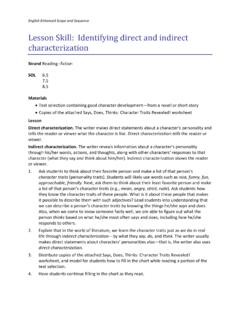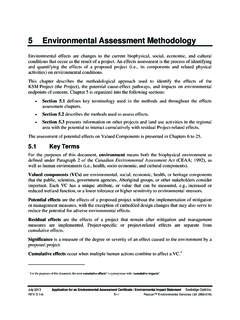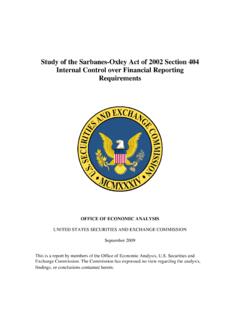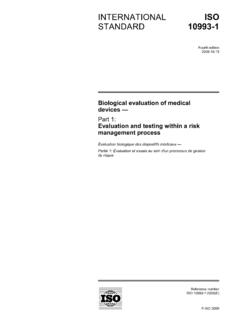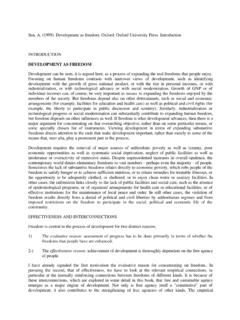Transcription of Full Project Proposal - Food and Agriculture Organization
1 MARKER ASSISTED SELECTION OF USEFUL CASSAVA GERMPLASM ADAPTED TO BIOTIC AND ABIOTIC STRESSES CAUSED BY GLOBAL CLIMATE CHANGE (BIOCAS) full Project Proposal Third Call for Proposals under the Benefit-sharing Fund Deadline for submitting full Project Proposal : 5th of December 2014 at and TABLE OF CONTENTS Project Proposal cover sheet General requirements SECTION A: EXECUTIVE SUMMARY Executive summary SECTION B: Project DESCRIPTION AND CONTENTS Problem definition Overall and specific objectives Targeted outputs, activities and related methodology of implementation Targeted PGRFA direct and indirect beneficiaries Impact and impact pathways 1. Food security and poverty alleviation Adaptation to climate change and environmental sustainability Scientific impact Capacity development and empowerment Relevance to national or regional priorities in its plans and programmes for PGRFA SECTION C: OPERATIONS Methodology of Project implementation Partnerships and collaboration arrangements Project management team Sustainability SECTION D: APPENDIXES Appendix:1 Information on the applicant Appendix 2: Logical Framework Appendix 3: Workplan Appendix 4: Budget Appendix 5: Disbursement information Third Call for Proposals of the Benefit-sharing Fund: Guidelines for the development of full Project proposals 2 Project Proposal COVER SHEET Project No.
2 _____ (For Treaty use. Do not write anything here) Project Title: MARKER ASSISTED SELECTION OF USEFUL CASSAVA GERMPLASM ADAPTED TO BIOTIC AND ABIOTIC STRESSES CAUSED BY GLOBAL CLIMATE CHANGE Project duration: 36 months Target crops: Cassava (Manihot esculenta) Targeted developing country/ies TANZANIA, KENYA Other Contracting Party/ies involved SPAIN Project geographic extension (km ) Total requested funding US$ Total co-funding US$ (In kind Contributions) Please select the type of Project you are applying for: Single-country Immediate Action Project (Window 2) Multi-country Immediate Action Programme (Window 2) Single-country Co-development and Transfer of Technology Project (Window 3) Multi-country Co-development and Transfer of Technology Project (Window 3) Applicant Name of Organization : Mikocheni Agricultural Research Institute (MARI) Type of Organization Public Research Institute Project Contact.
3 (name and position) Joseph Ndunguru (PhD), Researcher at MARI E-mail address: Telephone: +255-22 2700552 Fax: +255-222-775549 Third Call for Proposals of the Benefit-sharing Fund: Guidelines for the development of full Project proposals 3 SECTION A: EXECUTIVE SUMMARY 1. Executive summary The Project belongs to Window 3: Support to the co-development and Technology Transfer involving a Consortium of 3 partners from 2 East African countries and Spain. It addresses Cassava which plays a key role for food security and subsistence of farmers in many countries of Africa. Abiotic stresses and related biotic stresses caused by climate change represent a critical limitation and a major threat to sustainable Agriculture and food security. It is necessary to develop new cultivars with tolerance to these stresses by exploiting the existing biodiversity of species. In this Project we will characterize in part novel, yet unexploited Cassava germplasm from East Africa and identify accessions which are adapted to these threats of climate change.
4 Based on this information we will develop molecular markers which can be used for Cassava breeding of new improved Cassava cultivars with elevated stress tolerance levels for sustainable Agriculture . Phenotypic evaluations of these accessions for resistance or tolerance to abiotic and associated biotic stresses will be performed in field trials and bio-assays. The traits for evaluation include abiotic stresses cold, drought and heat as well as the major viral diseases in cassava. The identification of tolerant genotypes will provide directly recommendations to farmers for cultivation of these varieties in environments with adverse agro-climatical conditions, and represent at the same time valuable material for the breeding of improved Cassava varieties. On the other hand we will detect candidate genes (CG) for resistance or tolerance to these stresses using different up to date molecular tools. These include RNAseq, an in silico mining approach of known genes and RAD sequencing.
5 We will analyse the allelic variation of these CG and determine the effect of specific alleles or allele combinations in the materials through amplicon sequencing and association mapping by linking the phenotypic data of the previous evaluations with the obtained molecular data. CG detection and analyses of alleles will be also performed using a random approach, known as RAD sequencing. The results will allow us to develop markers for marker assisted selection, which can be applied to speed up conventional Cassava breeding programs. Results of individual CG will be extended to multiple CG and combined for multiple traits through Model building with the practical aim of assigning parental breeding values and predict progeny performances in order to realize optimized crosses. Pre-breeding activities by means of crossings and evaluations of resulting progenies will be performed to combine favourable characteristics and to improve adaptation to climate change, supported by the developed markers and models.
6 All Project results and Products (breeding clones) will be disseminated and transferred between partners, but also to farmer associations, to the scientific community, to breeders and to gene bank curators through numerous dissemination and transfer actions. A Project WEB page with an integrated Knowledge base will be established containing all Project results and external links. Most important, extended training stages for technology transfer of trainees from the developing countries at the Lab in Spain, will allow these institutions to apply further or analogous studies independently on their own in the future. The molecular markers and Models for analysing stress adaptation in Cassava can be used for efficient marker assisted breeding in Cassava and related species. Third Call for Proposals of the Benefit-sharing Fund: Guidelines for the development of full Project proposals 4 SECTION B: Project DESCRIPTION AND CONTENTS Problem definition Cassava (Manihot esculenta), also called yuca or manioc, is extensively cultivated as an annual crop in tropical and subtropical regions for its edible starchy tuberous root, a major source of carbohydrates.
7 Cassava is the third largest source of food carbohydrates in the world. Cassava plays a particularly important role in Agriculture in developing countries especially in sub-Saharan Africa because it does well on poor soils and with low rainfall, and because it is a perennial that can be harvested as required. Its wide harvesting window allows it to act as a famine reserve and is invaluable in managing labor schedules. It also offers flexibility to resource-poor farmers because it serves as either a subsistence or a cash crop (FAO 2008). The effects of global climate change such as heat, coldness, drought or flooding are threatening sustainable cassava cultivation. Moreover, changes in their affecting pathogen spectra have been observed. A number of serious diseases, such as cassava bacterial blight or cassava mosaic virus, affects cassava cultivation. Recently a new virus causing brown streak disease has been identified as a major threat to cassava cultivation worldwide.
8 Therefore, it is necessary to develop new cultivars that are adapted to these threats by applying marker assisted selection (MAS) or genetic transformations based on useful candidate genes. The aim of this Project is to characterize this valuable Cassava germplasm with respect to resistance and tolerance to different biotic and abiotic stresses and exploit it through breeding to obtain new Cassava varieties adapted to climate change for sustainable Agriculture . Genomic studies offer the possibility to characterize germplasm efficiently at the molecular level and to accelerate considerably breeding programmes. The detection of candidate genes for useful traits offers the possibility to apply them in marker assisted selection (MAS) within breeding programmes. The survey of allelic diversity of such genes within cultivated and wild accessions of a species and analyses of their particular effects, permits the selection of the most efficient allele combinations.
9 Within this Project , we want to identify in cassava useful candidate genes for different biotic and abiotic stresses using various molecular tools, characterize the allelic variation of this germplasm and use markers and models in marker assisted breeding in order to speed up the obtainment of improved varieties. Project objectives: Overall and specific objectives The General Objective consists of identifying Cassava accessions adapted to biotic and abiotic threats of climate change, and to identify the underlying candidate genes for developing molecular markers and models, which will speed up the breeding of improved and adapted Cassava cultivars for sustainable Agriculture . In order to meet this general objective the following Specific Objectives are envisaged: 1. Evaluation of Cassava accessions (cultivars, accessions, breeding clones) for resistance or tolerance to abiotic and biotic stresses related to global climate change.
10 2. Detection of useful candidate genes (CG) for abiotic and associated biotic stresses applying different molecular tools. 3. Molecular characterization of the allelic variation in these CG and determination of allelic composition in the evaluated accessions. 4. Association mapping to detect the effects of specific CG alleles or CG allele combinations on the tolerance levels of the analysed stresses, development of molecular markers for Marker-assisted selection and Model building to assign parental breeding values and predict progeny performances. 5. Pre-breeding activities in Cassava to combine favourable characteristics and to improve adaptation to climate change applying the developed markers and models. 6. Dissemination and Transfer of Project results and Products (accessions and breeding clones). Third Call for Proposals of the Benefit-sharing Fund: Guidelines for the development of full Project proposals 5 Targeted outputs, activities and related methodology of implementation Participants: Three public institutions will carry out the R&D activities jointly: P1.










